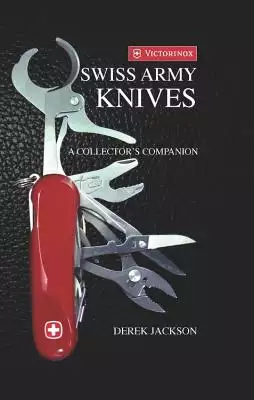the hundreds logo的問題,透過圖書和論文來找解法和答案更準確安心。 我們找到下列包括價格和評價等資訊懶人包
the hundreds logo的問題,我們搜遍了碩博士論文和台灣出版的書籍,推薦Airey, David寫的 Identity Designed: The Definitive Guide to Visual Branding 和Jackson, Derek/ Hook, Patrick (EDT)的 Swiss Army Knives: A Collector’s Companion都 可以從中找到所需的評價。
這兩本書分別來自 和所出版 。
國立臺北科技大學 管理學院經營管理EMBA專班 胡同來、趙莊敏所指導 黃瓊慧的 IP 授權產業廠商成長策略之硏究-以 J 公司為例 (2021),提出the hundreds logo關鍵因素是什麼,來自於IP 授權、品牌授權、商業模式、文化創意、NFT、Co-loation。
而第二篇論文國立臺北藝術大學 文化資產與藝術創新博士班 林劭仁教授、林詠能教授所指導 許淑華的 國際藝文活動對城市發展評估指標之研究-以2016臺北世界設計之都為例 (2020),提出因為有 國際藝文活動、城市競爭力、城市行銷、創意城市、觀光城市、世界設計之都的重點而找出了 the hundreds logo的解答。
Identity Designed: The Definitive Guide to Visual Branding

為了解決the hundreds logo 的問題,作者Airey, David 這樣論述:
Ideal for students of design, independent designers, and entrepreneurs who want to expand their understanding of effective design in business, Identity Designed is the definitive guide to visual branding. Written by best-selling writer and renowned designer David Airey, Identity Designed formalizes
the process and the benefits of brand identity design and includes a substantial collection of high-caliber projects from a variety of the world's most talented design studios. You'll see the history and importance of branding, a contemporary assessment of best practices, and how there's always more
than one way to exceed client expectations. You'll also learn a range of methods for conducting research, defining strategy, generating ideas, developing touchpoints, implementing style guides, and futureproofing your designs. Each identity case study is followed by a recap of key points. The book
includes projects by Lantern, Base, Pharus, OCD, Rice Creative, Foreign Policy, Underline Studio, Fedoriv, Freytag Anderson, Bedow, Robot Food, Together Design, Believe in, Jack Renwick Studio, ico Design, and Lundgren+Lindqvist.Identity Designed is a must-have, not only for designers, but also for
entrepreneurs who want to improve their work with a greater understanding of how good design is good business. David Airey is an entrepreneurial graphic designer from Northern Ireland. He writes three of the most popular graphic design blogs on the Internet: DavidAirey.com, LogoDesignLove.com, and
IdentityDesigned.com. David’s blogs have attracted hundreds of thousands of loyal fans who read and are inspired by his writing every day. David is also the author of Logo Design Love and Work for Money, Design for Love.
the hundreds logo進入發燒排行的影片
Until 2015, Game consoles were banned in China, how did kids in the 80s and 90s get around this? Following the popularity and longevity of the Nintendo Entertainment System (NES; known in Japan as the Family Computer, or Famicom), the system has seen many clone video game consoles. Such clones are colloquially called Famiclones (a portmanteau of "Famicom" and "clone"), and are electronic hardware devices designed to replicate the workings of, and play games designed for, the NES and Famicom. Hundreds of unauthorized clones and unlicensed copies have been made available since the height of the NES popularity in the late 1980s.[citation needed] The technology employed in such clones has evolved over the years: while the earliest clones feature a printed circuit board containing custom or third party integrated circuits (ICs), more recent (post-1996) clones utilize single chip designs, with a custom ASIC which simulates the functionality of the original hardware,[citation needed] and often includes one or more on-board games. Most devices originate in Asian nations, especially China, Taiwan, Southeast Asia, and to a lesser extent South Korea.[citation needed]
In some locales, especially South America, South Africa, and the former Soviet Union, where the NES was never officially released by Nintendo, such clones were the only readily available console gaming systems. Such was the case with the Dendy Junior, a particularly successful NES clone which achieved widespread popularity in Russia and former Soviet republics in the early 1990s. Elsewhere, such systems could occasionally even be found side by side with official Nintendo hardware,[1] often prompting swift legal action.[2] Many of these early systems were similar to the NES or Famicom not only in functionality, but also in appearance, often featuring little more than a new name and logo in place of Nintendo's branding. As opposed to that, in former Yugoslavia NES clones often visually resembled Sega Mega Drive, together with the Sega logo.[3]
Few of these systems are openly marketed as "NES compatible".[citation needed] Some of the packaging features screenshots from more recent and more powerful systems, which are adorned with misleading, or even potentially false, quotes such as "ultimate videogame technlology" [sic] or "crystal clear digital sound, multiple colors and advanced 3D graphics".[citation needed] Some manufacturers opt for a less misleading approach, describing the system generically as a "TV game", "8-bit console", "multi-game system", or "Plug & Play", but even these examples generally say nothing to suggest any compatibility with NES hardware.
Join me on Facebook: http://www.facebook.com/winstoninchina
Support me on Patreon: http://www.patreon.com/serpentza
Twitter: @serpentza
Music used: dragonatlas.s3m
IP 授權產業廠商成長策略之硏究-以 J 公司為例
為了解決the hundreds logo 的問題,作者黃瓊慧 這樣論述:
IP 是「智慧財產權 intellectual property」的縮寫,指是人運用藝術或智慧所創作出來具有意義的內容,可當成自有財產,具有價值,並且法律會保護著作權利的一種財產。授權就是行為模式的一種,將自己的具有價值的財產,授予有範圍 的使用權利,二者合併就是最常見應用在商業行為的方式。而 IP 授權產業是個生態圈,在全球品牌意識越來越強的情況,全世界 IP 品牌授權規模已達到上千億市場,IP 授權產業在不斷擴大的授權產品類別和 IP 財產類型範圍內,要如何開展業務的途徑?本研究探討 IP 授權商應該如何因應全球授權市場發展迅速,且現今在多元新媒體時代,資訊爆發,取得 IP 代理或權利,
已非操控在少數代理商手上。而 IP 所有者或代理商,應藉由哪些策略發覺新市場,或新的商業行銷模式。以個案研究公司為例,來研究如何提高 IP 所有者或代理授權商創造更多的營收以及 IP 授權商如何透過多角化經營來擴大企業或促使企業成長。
Swiss Army Knives: A Collector’s Companion

為了解決the hundreds logo 的問題,作者Jackson, Derek/ Hook, Patrick (EDT) 這樣論述:
Swiss Army Knives is the comprehensive guide for Swiss Army Knives no collector should live without. This fascinating, colorfully illustrated book is a celebration of one of the great icons of Swiss culture. Swiss Army Knives catalogs each gadget, beginning with the simple Soldier's knife, later dev
eloped into the Student Knife, the Cadet Knife, and Farmer's Knife. Each model is accompanied with a narrative. For example, the Soldier's knife was heavy, which led developers to create the lighter Officer's knife, with an added second blade and a corkscrew. The book includes hundreds of illustrate
d examples of Swiss Army Knives and anecdotes from military personnel and other owners and a comprehensive model identification system, for the dedicated collectors. This fascinating, colorfully illustrated celebration of one of the great icons of Swiss culture--in France it's the Couteau Swiss, in
Germany the Schweizer Messer, and to the English-speaking world it's the Victorinox Swiss Army Knife--used by military programs the world over and given away as gifts to guests by the White House (Lyndon Johnson did it first). Switzerland is not a country we associate with war. Nor is it a major st
eel-producing country. Yet the Swiss Army Knife, originally produced by a Swiss master cutler for the Swiss armed forces, is now recognized throughout the world. Like the Rolls-Royce or the Zippo lighter, it has become part of mythology, an icon that represents a standard of quality and versatility
which has carried through from the nineteenth into the twenty-first century. The basic design of the knife has changed little since Karl Elsener patented the first Swiss Officer's Knife in 1897, but the context within which the knives are now used would have astonished him. Elsener's knives have bee
n used at the top of Mount Everest and on coral reefs; astronauts carry them in the Space Shuttle; and they have saved lives on the ocean, in the air and in the desert. Charles Elsener, the fourth son of a hat-maker, decided not to enter the family business but to become a cutler. After serving his
apprenticeship in south Germany, he opened his own business near Schwyz in Switzerland. Soon after, in 1891, he formed the Swiss Cutlery Guild with the main aim of producing soldiers' knives for the Swiss Army, which had to date been bought from German sources. By the end of the year, the first batc
h had been delivered and Elsener's plan proved a success--the first knife, known by name rather than type number--the Soldier's knife--had a blade, awl, can opener, and screwdriver. Then the development started: as well as the simple Soldier's knife he quickly developed the Student Knife, the Cadet
Knife and Farmer's Knife. Because the Soldier's knife was heavy, Elsener developed the lighter Officer's knife, with an added second blade and a corkscrew. On 26 April 2005 Victorinox acquired Wenger, its historic rival and the other official supplier of the Swiss Army knife. It also started expandi
ng its product range to include fragrances, travel gear, and watches. Victorinox has since licensed the Swiss Army brand and shield logo to companies producing watches, writing tools, luggage and clothing. Victorinox produces some 34,000 Swiss Army knives, 38,000 multi-tools, and 30,000 household, k
itchen, and knives per workday. Approximately 90 percent of its production is exported to more than 100 countries. With a wide reach and diverse product development, it's no wonder their knives are so popular. Derek Jackson is a retired English teacher who lives in East Sussex in the UK. After spe
nding some time as a scout troop leader in the UK he became fascinated with the Victorinox Swiss Army Knife and has visited the Victorinox factory in Ibach-Schwyz, in Switzerland, several times. The Victorinox company kindly gave access to their archive and a good deal of this material is featured i
n this book.
國際藝文活動對城市發展評估指標之研究-以2016臺北世界設計之都為例
為了解決the hundreds logo 的問題,作者許淑華 這樣論述:
在科技產業發展和全球化趨勢影響下,世界各國關係已逐漸扁平,更在空間不斷壓縮及彊界藩籬消逝下,造成區域人口流動,形成人口集中與城市化現象,促使競爭焦點從國家之間的相互競爭進而轉向城市競爭。臺北市近年積極透過國際藝文活動來展現臺北市的創造能量及國際能見度,如2010臺北國際花卉博覽會、2016臺北世界設計之都等,以促使臺北在國際社會建立並持續維持良好的城市形象。而在國際藝文活動動輒耗資千萬甚至上億、吸引數十萬、百萬遊客到訪,熱鬧之餘是否達成推動城市發展、提升觀光之預期效益,則是本研究關注之課題。本研究透過「2016臺北世界設計之都」途徑,探討國際藝文活動對城市發展之影響關連性,藉由城市競爭力、城
市行銷、創意城市及觀光城市四個向度,透過模糊德懷術及焦點團體訪談法的質性與量化資料蒐集與驗證分析後,建構國際藝文活動對城市發展評估指標之9項構面與33項指標,提供在推動城市發展上的策略評估參考,並可延伸及轉化為效益評核指標,成為檢視政府的國際行銷力、執行力與社會力的策略與方法。本研究建議政府應積極爭取或引進國際藝文活動,並整合中央與地方資源,加強行銷經費及策略,以加速推動區域發展外,同時亦應透過適當的評估指標,以了解國際藝文活動的效益。